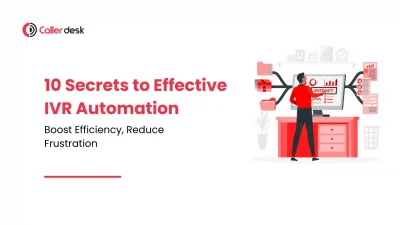Are you prepared to transform your customer service in 2025? Virtual call centers are transforming the way businesses interact with their customers, offering flexibility, scalability, and efficiency that traditional call centers can’t match. This guide provides a step-by-step roadmap to help you launch a successful virtual call center in 2025.
A virtual call center (VCC) is a customer service center in which agents work remotely rather than from a central physical location. VCCs leverage advanced technology to connect agents across various locations, allowing them to perform their duties from anywhere with an internet connection.
Step by step guide for how to launch Virtual Call Center
1. Market Research and Planning
Identifying Needs
Before launching a virtual call center, assess your business needs and customer service goals. Determine what you aim to achieve with your virtual call center, such as reducing response times, improving customer satisfaction, or expanding service hours.
Competitive Analysis
Analyze your competition to determine what they are doing well and where they are failing. Identify market trends and best practices that can inform your strategy.
Setting Objectives
Define clear goals and key performance indicators (KPIs) for your virtual call center. These objectives will guide your operations and help measure success.
2. Technology and Infrastructure
Choosing the Right Software
Select a cloud-based call center software with essential features like call routing, CRM integration, real-time analytics, and omnichannel support. Popular options include Zendesk, Five9, and CloudTalk.
VoIP and Cloud Solutions
VoIP (Voice over Internet Protocol) and cloud-based systems are important for virtual call centers. They enable high-quality voice communications and seamless data access from any location.
Hardware Requirements
Ensure your agents have the necessary hardware, including high-speed internet, computers, headsets, and any other required devices.
3. Building Your Team
Recruitment Strategies
Hire skilled and reliable remote agents. Look for candidates with excellent communication skills, self-discipline, and the ability to work independently.
Training Programs
Create effective training programs to ensure your agents are properly equipped. Use screen-sharing software and video conferencing solutions to conduct remote training sessions.
Team Management
Manage your remote team successfully by fostering a collaborative environment, setting clear expectations, and using tools like Slack and Zoom for communication.
4. Setting Up Operations
Operational Framework
Establish workflows and processes to ensure smooth operations. Define call handling procedures, escalation protocols, and quality assurance practices.
Scheduling and Time Zones
Effectively manage shifts and time zone differences to provide 24/7 support. Optimize agent availability and coverage with scheduling software.
Quality Assurance
Implement QA processes to maintain high service standards. Regularly monitor calls, provide feedback, and conduct performance reviews.
5. Integrating Communication Channels
Omnichannel Support
Integrate many communication channels (phone, email, chat, social media) to ensure a consistent customer experience.
CRM Integration
Connect your virtual call center with CRM systems to access customer data and streamline interactions.
Collaboration Tools
Use collaboration platforms such as Slack, Microsoft Teams, and Trello to improve team communication and coordination.
6. Customer Experience Optimization
Personalization
Use customer data to personalize interactions and improve satisfaction. Customize responses based on the customer’s history and preferences.
Feedback Loops
Collect and use consumer feedback to continuously improve your service. Use surveys and feedback forms to gather information.
Performance Metrics
To maximize performance, keep track of critical metrics including response times, call resolution rates, and customer satisfaction scores.
7. Security and Compliance
Data Security
Strong encryption, safe access controls, and frequent security audits can all help to ensure the protection of customer information.
Regulatory Compliance
Comply with relevant regulations like GDPR and CCPA to protect customer privacy and avoid legal issues.
Best Practices
Implement best practices for security and compliance, including regular training for employees and updating security protocols.
8. Marketing and Promotion
Launching Your Virtual Call Center
Plan a successful launch by promoting your virtual call center through various channels, including social media, email marketing, and press releases.
Promoting Your Services
Use effective marketing techniques to attract customers. Highlight the benefits of your virtual call center, such as 24/7 support and personalized service.
Building Brand Loyalty
Create and maintain customer loyalty by consistently delivering excellent service and engaging with your customers.
9. Continuous Improvement
Monitoring and Analytics
Use monitoring tools and analytics to track performance and identify areas for improvement.
Adaptation and Scaling
Adapt to changing client needs and market Trends. Scale your operations as needed to meet demand.
Staying Ahead
Stay ahead of industry trends and innovations to continuously improve your virtual call center operations.
Conclusion
Launching a successful virtual call center in 2025 is a transformative step towards enhancing your customer service operations. By following this comprehensive guide, you can leverage the flexibility, scalability, and efficiency that virtual call centers offer, far surpassing the capabilities of traditional call centers.
Ready to elevate your customer service with a virtual call center? Share your experiences, ask questions, or find out more about setting up a VCC. Discover how Caller Desk, the best virtual call center provider, can revolutionize your business.





